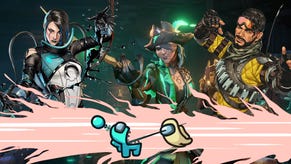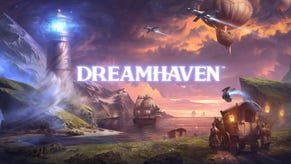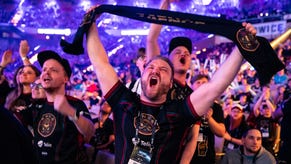Starcraft 2: One Player Hands-On (+ InterChat)
Turning up to a hands-on event for a much-anticipated game when you've already been playing the game for a good few months is a strange one. Of course, I haven't been playing it. What I've been playing is the Multiplayer Beta – and WORD WAR THREE will actually return one day – and that's not Starcraft 2 at all. To see what else Starcraft 2 actually is - the entirity thereof - is the reason why I've made my way across London.
Blizzard have previously said that people are taking the Beta as somehow a kind of demo somewhat bemusing. That's not what it is at all. They consider it a developing tool rather than a marketing one – and playing it is a lot like jumping straight into World of Warcraft at Level 80. “As the industry has grown, the idea of beta-tests of products has become more wildly known, they've sort of lost sight of the purpose of Beta Tests,” says Executive Vice President of Product Development and Blizzard-co-founder Franck Pearce , “It really is – for us anyway – to get the game into the hands of players, while it's a work in progress, so we can re-iterate on it further. So that when we finally package it up and delver it to all our fans, the experience is as good as it can be.”
They're learning from the feedback, though they haven't made it easy for themselves and the results are fascinating. Apparently, the Zerg are considered overpowered to players in the East, while the opposite is true in the West. And the statistics bear them out – which shows a problem. They're having to balance for possibilities and future discovery. From what I understand, historically speaking, Starcraft was initially dominated by high-level macro-economic play, and it took a while for the micro of character placements to emerge as players started having this inspired paradigm shift. I'd have thought it overwhelming to try and future-proof. Pearce disagrees. It's actually part of the fun. “It's not overwhelming. I'd much more tag it as exciting, for us,” he says “That's where the map-editor comes in. It's so full-featured and powerful I know that people are going to conceive gameplay styles and create maps around those gameplay styles that we haven't even conceived yet. It's exciting – we've not just created a great game experience. But that the map-editor with the engine is this whole other platform, where other ideas can come to fruition.”
In terms of the multiplayer balancing, they haven't made it easy for themselves either. Because they're actually testing two things at once. “The biggest thing for me is that the matchmaking system we've put in test works so well that it compensates when it matches people up for the race imbalance,” Pearce says, “Even if there are races that are imbalanced, you still see an average 50:50 win percentage. Which is a huge challenge for us – because we need a great matchmaking system and game balance.”
One element of the single player game which I'm particularly fascinated by – which, sadly, wasn't on show today – is the challenge modes. The idea is that they're a series of challenge tutorials which introduce key concepts for playing online in an atomic fashion – presumably - like drills in a game of football. So when you actually go and play online, you have more actual functional skills than what a single-play campaign can teach you. With one of the widest audiences of every developer, they see their duty to try and feed both – and facilitate the growth of one into the other. “When we look at the RTS and our experiences with World of Warcraft, where we've been drawing players to PC Gaming... and in some cases, these people not only have never played MMOs, but have never even played a computer game. And they're trying it out, because we're running Mr-T adverts or whatever,” says Pearce, explaining their thinking, “and so if you look at SC2 and the RTS, it's a very complex experience. And we did not want to take for granted any existing knowledge, in terms of delivering that experience. We can't assume that all the players who come to the game bring to the table the knowledge of all the games that have been made. So we really want to find ways to bridge the gap between someone who's never played an RTS, and the hardcore element of the online, Head-to-head play. The story-mode campaign has traditionally been what we've used to bridge the gap, but we didn't think it was enough this time. Which is why we've introduced the challenge maps.”
Which kind of leads to what I actually played, which was about a half-hour with a couple of maps, plus fiddling around with the interstitial parts. I was really, genuinely surprised by what they're doing there. I mean, who'd have thought someone would put a rhythm-action Zerg-dance game between missions? No-one would have guessed that.
No, I'm lying. It's actually got a full Mass-Effect-styled ship section, with immersive sim elements.
No, I'm still lying.
And I'm doing so, because I've got the suspicion that – to the always-novelty-hungry RPS-readers – they may be actually a little disappointed. What we have here is classic Blizzard – smart moves (in fact, arguably the smartest moves), but most impress in their precision rather than their vision. The nearly-thirty missions are connected by ship-set-scenes which recall the line of internal-environments used by games in the lineage of Wing Commander. Rather than menus, you click on things in the environment to activate them. So you can spend cash on upgrades in some manner of Armoury, sort out your research in the lab, and hire Mercenaries in the Cantina. Plus chat to people to forward the story. And watch the news. All of which can be ignored if you want to press on with the click-destruction, but savoured if you have that temperament. And, for all the talk about the relatively modest engine, the in-engine cut-scenes have some marvelously solid character work.
You may have noticed a handful of actually nifty things just casually dropped in there. The upgrade system seems pretty elegant. Completing missions gives you cash, which allows you to unlock permanent abilities for your troop types – alternatively, for starting a contract with one of the Mercenary groups. These are limited-number improved versions of normal unit types, who can be summoned from a special structure when you've signed the aforementioned contract. More money, but they turn up instantly to bring the kick-ass.
While there's questions of priority with the cold cash, it's in the actual research which the hard decisions start. As you play each mission, there's the option to gather Protoss and Zerg tech. As you collect it, you climb the respective tech-tree. At each stage, you get the choice between two mutually exclusive upgrades. So – for example – choosing between the specialist-close-combat blast-field robo-dogs (Well, they looked like dogs to me) will stop you getting the hardy transporter, and vice versa. Fundamentally, the single-player game is a chance to step away from the rigorous balancing of the multiplayer game, and drop in some interesting units which would break the game in a competitive environment but can be contextualized in a single-player mission much easier. There's a degree of non-linearity to it, with you being able to select from a number of missions. In other words, get stuck and you can go off and do something else, then return later with some better guns.
The two levels played certainly are promising. Both offer a lot of colour, while not falling to being simple gimmick levels, divorced from the actual real experience. The first involved actually gathering six energy sources from nine in the area - while the Protoss were trying to seal up the same sourcexs. The second was a defensive mission, based around you holding a base while an enormous mining laser cut its way into a vault – with the actual laser under your control, so it could be repurposed for annihilating an attacking wave. In other words, both let you have places where you could show actual skill and decide on different options. They're also cutely reactive – in the first, one of your advisers suggests you not to try and take two at once, because they're going to send in an enormous response. Being stupidly macho, you give it a shot – which the adviser comments on what a ballsy move that was. Good luck with it, eh?
At which point things get a bit messy as the Protoss pile on. Well, you were warned.
So, a strong RTS game is here, at least in this tiny impression. You can see the workmanship, like a craftsman-produced furniture. I'm certainly looking forward to playing more of it as the team finish their gargantuan, expectation-heavy route. I'd be intimidated. Blizzard, apparently, aren't. “The team on Star Craft 2 is the same who worked on Warcraft 3,” says Pearce, “They're accustomed to working on highly anticipated sequels. It's one of the most experienced real-time-strategy teams in the industry, and they're really passionate about the genre – so they're making it for themselves as much as anyone else. And I think we've done a great job so far. I don't think anyone's going to be horribly disappointed at all.











